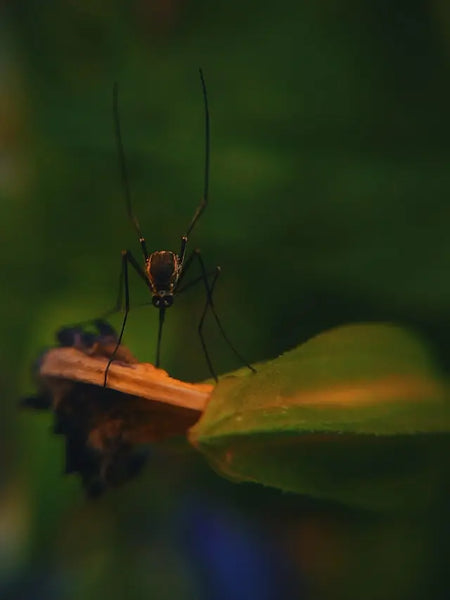Introduction
Mosquitoes can be a pest that causes significant pain to humans. They’re known for biting and causing an itchy rash. However, they’re also a disease-carrying pest. Mosquitoes in Australia are known to carry several diseases humans can catch including Japanese encephalitis, Ross River, Barmah Forest, Kunjin, Murray Valley encephalitis, and dengue fever.
Mosquitoes live throughout Australia, but there are concentrations on the East and West Coasts with significant populations also on South East, Tasmania, and some populations abundant on the north coast. There are few populations within central Australia, but there are some smaller populations that can be a pest.
The mosquito life cycle is interesting, and learning about it can help you prevent large mosquito populations from thriving close to you and allows you to predict when they will arrive. In this article, we will cover the life cycle of a mosquito in detail.
Mosquito Life Cycle Stages
Here is a breakdown of the mosquito life cycle.
Stage One: Egg Stage
Mosquitoes start life as an egg. These are laid on or near the surface of water or on damp soil that the female mosquito believes will become flooded. The female mosquito lays 200 eggs at a time. These eggs will tend to hatch within about 48 hours.
Stage Two: Larval Stage
The larval stage is when the mosquito eggs have hatched. These wigglers, as they are also known, can survive in a wide variety of water conditions, from fresh to saltwater. Most larvae have siphon tubes that they use for breathing as they cling to the waters' surface. During the larval stage, the individuals will go through four growth stages. Each stage is known as an instar. The fourth instar will develop into the pupae.
Stage Three: Pupal Stage
The pupal stage is when the mosquito is in a non-feeding phase. The larval is transforming into the adult form in a safe cocoon. The pupal stage lasts for about two days. When the individual is ready and completely transformed, the skin splits into two and the adult mosquito will emerge. It is very similar to other insects like the butterfly.
Stage Four: Adult
The adult will be very tired at first and will rest on the surface of the water for a short time. This time is also spent allowing the exoskeleton to harden and the wings to spread out and dry before the individual can fly. Once airborne, the males will seek mates and both genders will attempt to find food. This is the last stage of the life cycle of mosquito species, after about three to four weeks.

How Long Do Mosquitoes Live?
The mosquito lifespan is relatively short, like most insects that develop in this style. The males are adults for only about ten days, whereas females tend to live for up to 56 days. The egg, larvae, and pupae stages can last from two to three weeks, depending on many factors.
The male mosquito will only feed on plant juices, like nectar, during its lifecycle. They are unable to bite and suck blood and so are no threat to humans. However, female mosquitoes will attempt to find protein, like from the blood of humans and other animals to help develop eggs.
Mosquito Lifespan Facts
Mosquitoes are an interesting species. They are known to be one of the most dangerous species to humans on Earth, responsible for one million deaths a year. However, some of the mosquito lifespan facts can surprise many.
For one, their short lifespan is often interesting. Under ideal conditions, female mosquitoes will only live for about two months from egg to death. However, if conditions are not right then the lifecycle of the mosquito is disturbed.
For example, the ideal temperature for the papal stage is about 23 to 26 degrees Centigrade. Outside of these ranges, the number of surviving mosquitoes tends to be fewer, but they will survive unless temperatures drop below 17 and go higher than 33.
Higher temperatures are also known to disrupt mosquito activity. Females are less active and will not bite as much. However, bites can be more dangerous, with diseases being more transmissible as temperatures rise.
Male mosquitoes can find mates by listening to the frequency of the beating wings of females. The wing of a female mosquito can beat at around 300 to 600 beats per second. Mosquitoes do have great hearing and can use this and other senses to navigate the world around them.
Conclusion
Mosquitoes can be a massive pain and cause an itchy rash or significant issues with numerous diseases. However, keeping them away can be simple by using the Envirobug device that emits a sound that deters them from your home and garden. It can also help disrupt egg-laying and other behaviours in your garden.
A female mosquito can lay about 200 eggs at a single time, however, it's more common for them to lay about 100 eggs. Out of these eggs, about 10% of them will survive to reach adulthood. Survival rates depend on predators, temperature, and water conditions.
Mosquitoes lay eggs in water, usually standing water. The water can be fresh, brackish, or saltwater as mosquito larvae are known to survive in all conditions, though their rate of growth can be affected.
Mosquito eggs, larvae, and pupal live in water, but the adults cannot live in water. After emerging from the pupal stages, mosquitoes will dry themselves on the surface and fly away. Females will return to the water to lay eggs but not enter it.
Yes, all species of mosquitoes require water to progress through the initial three stages of their lifecycle. That is why mosquito populations are often lower in deserts or areas with little water. In urban areas, mosquitoes tend to lay eggs in ponds, water containers, or swimming pools.
The female mosquito sometimes lays eggs in wet soil when they know the area will become flooded soon. However, in most instances, the female will lay eggs in standing water.











